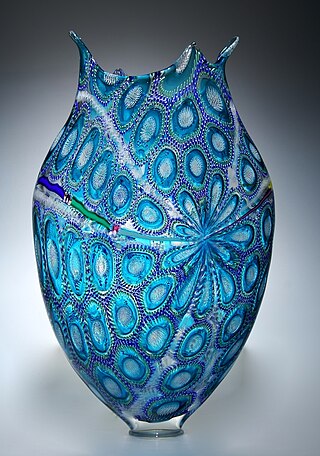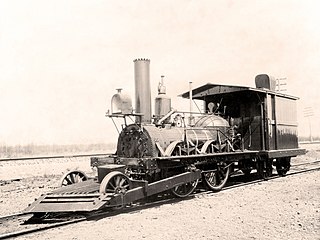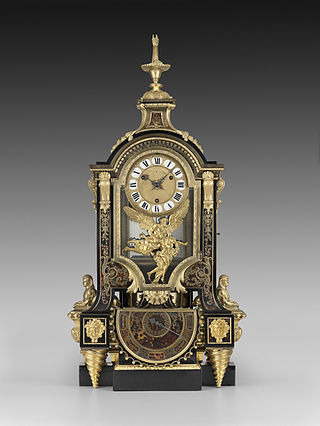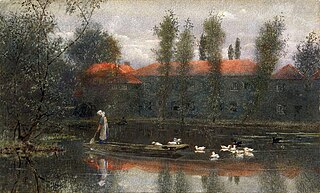Related Research Articles

A barometer is a scientific instrument that is used to measure air pressure in a certain environment. Pressure tendency can forecast short term changes in the weather. Many measurements of air pressure are used within surface weather analysis to help find surface troughs, pressure systems and frontal boundaries.

Amberley Museum is an open-air industrial heritage museum at Amberley, near Arundel in West Sussex, England. The museum is owned and operated by Amberley Museum and Heritage Centre, a not-for-profit company and registered charity, and has the support of an active Friends organisation. The items in the Museums collection are held by The Amberley Museum Trust

Great Torrington is a market town in Devon, England. Parts of it are sited on high ground with steep drops down to the River Torridge below, with the lower-lying parts of the town prone to occasional flooding. Torrington is in the centre of Tarka Country, a landscape captured by Henry Williamson in his novel Tarka the Otter in 1927. Great Torrington has one of the most active volunteering communities in the United Kingdom.

The Magdeburg hemispheres are a pair of large copper hemispheres with mating rims that were used in a famous 1654 experiment to demonstrate the power of atmospheric pressure. When the rims were sealed with grease and the air was pumped out, the sphere contained a vacuum and could not be pulled apart by teams of horses. Once the valve was opened, air rushed in and the hemispheres were easily separated. The Magdeburg hemispheres were invented by German scientist and mayor of Magdeburg, Otto von Guericke, to demonstrate the air pump that he had invented and the concept of atmospheric pressure.

A lime kiln is a kiln used for the calcination of limestone (calcium carbonate) to produce the form of lime called quicklime (calcium oxide). The chemical equation for this reaction is

Studio glass is the modern use of glass as an artistic medium to produce sculptures or three-dimensional artworks in the fine arts. The glass objects created are intended to make a sculptural or decorative statement, and typically serve no useful function. Though usage varies, the term is properly restricted to glass made as art in small workshops, typically with the personal involvement of the artist who designed the piece. This is in contrast to art glass, made by craftsmen in factories, and glass art, covering the whole range of glass with artistic interest made throughout history. Both art glass and studio glass originate in the 19th century, and the terms compare with studio pottery and art pottery, but in glass the term "studio glass" is mostly used for work made in the period beginning in the 1960s with a major revival in interest in artistic glassmaking.

The Black Country Living Museum is an open-air museum of rebuilt historic buildings in Dudley, West Midlands, England. It is located in the centre of the Black Country, 10 miles west of Birmingham. The museum occupies 10.5 hectares of former industrial land partly reclaimed from a former railway goods yard, disused lime kilns, canal arm and former coal pits.

John Bull is a historic British-built railroad steam locomotive that operated in the United States. It was operated for the first time on September 15, 1831, and became the oldest operable steam locomotive in the world when the Smithsonian Institution ran it under its own steam in 1981. Built by Robert Stephenson and Company, it was initially purchased by and operated for the Camden and Amboy Railroad, the first railroad in New Jersey, which gave it the number 1 and its first name, "Stevens". The C&A used it heavily from 1833 until 1866, when it was removed from active service and placed in storage.
The Yorkshire Air Museum & Allied Air Forces Memorial is an aviation museum in Elvington, York on the site of the former RAF Elvington airfield, a Second World War RAF Bomber Command station. The museum was founded, and first opened to the public, in the mid 1980s.

Morris, Marshall, Faulkner & Co. (1861–1875) was a furnishings and decorative arts manufacturer and retailer founded by the artist and designer William Morris with friends from the Pre-Raphaelites. With its successor Morris & Co. (1875–1940) the firm's medieval-inspired aesthetic and respect for hand-craftsmanship and traditional textile arts had a profound influence on the decoration of churches and houses into the early 20th century.

The Zuiderzee Museum, located on Wierdijk in the historic center of Enkhuizen, is a Dutch museum devoted to preserving the cultural heritage and maritime history from the old Zuiderzee region. With the closing of the Afsluitdijk on May 28, 1932, the Zuiderzee was split in two parts: the waters below the Afsluitdijk are now called the IJsselmeer, while the waters north of it are now considered to be part of the Waddenzee.

The tempest prognosticator, also known as the leech barometer, is a 19th-century invention by George Merryweather in which leeches are used in a barometer. The twelve leeches are kept in small bottles inside the device; when they become agitated by an approaching storm, they attempt to climb out of the bottles and trigger a small hammer which strikes a bell. The likelihood of a storm is indicated by the number of times the bell is struck.

Meteorological instruments, including meteorological sensors, are the equipment used to find the state of the atmosphere at a given time. Each science has its own unique sets of laboratory equipment. Meteorology, however, is a science which does not use much laboratory equipment but relies more on on-site observation and remote sensing equipment. In science, an observation, or observable, is an abstract idea that can be measured and for which data can be taken. Rain was one of the first quantities to be measured historically. Two other accurately measured weather-related variables are wind and humidity. Many attempts had been made prior to the 15th century to construct adequate equipment to measure atmospheric variables.
A glossary of terms used in glass art

A bottle oven or bottle kiln is a type of kiln. The word 'bottle' refers to the shape of the structure and not to the kiln's products, which are usually pottery, not glass.

The Glassworks Museum of the Ore Mountains is located in the old socage vault (Fronfeste) of Purschenstein Castle in Neuhausen/Erzgeb. in the German Free State of Saxony.

Barometer Clock (Boulle) by André-Charles Boulle is a late seventeenth-century French clock created out of ebony, turtle shell, brass, gilt bronze, and enamel. The clock case is decorated on all sides and was intended as either a centerpiece or for display on a mantel in front of a mirror. The centerpiece of the clock is a relief of "Father Time Carrying Off Truth."

Denise Wren was an Australian-born British studio potter and craftsperson. Wren was one of the first female studio potters in Britain. She studied and taught with the Kingston School of Art, Knox Guild and Camberwell College of Arts. Wren and her family subsequently set up the Oxshott Pottery and wrote on the subjects of ceramics, textiles and making.

The Pannier Market in Great Torrington in Devon is a Victorian pannier market of 12 small indoor shops - six either side of a narrow cobbled lane built in 1842 and restored in 1999. The Market House building at the front of the complex has been a Grade II* listed building on the Historic England Register since 1951.

The Merton Abbey Works was a textile printing factory in Merton, then part of Surrey but now in Greater London, England. Textile industries were active there from approximately 1690 until 1940. From 1880 to 1940, the Works were the factory of the Arts and Crafts movement design firm Morris & Co. The Works were demolished after the closure of Morris & Co in 1940.
References
- ↑ Halstead, Robin; Hazeley, Jason; Morris, Alex; Morris, Joel (2006). "Barometer World". Bollocks to Alton Towers: Uncommonly British Days Out. ISBN 9780141905990.
- ↑ Barometer makers lose battle over mercury, The Daily Telegraph Online, 6 June 2007. Accessed 4 Dec 2010